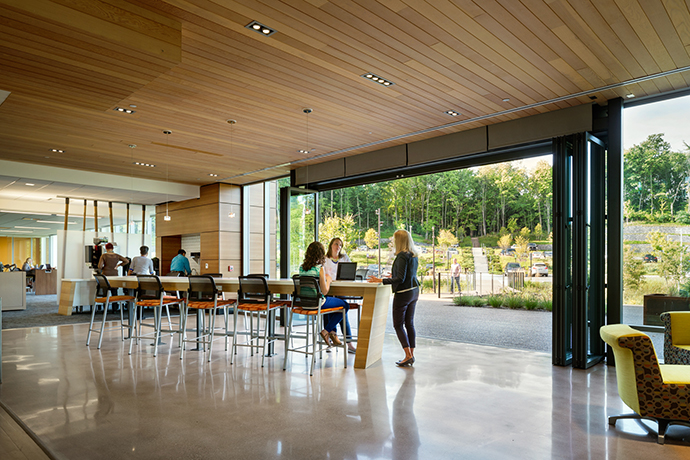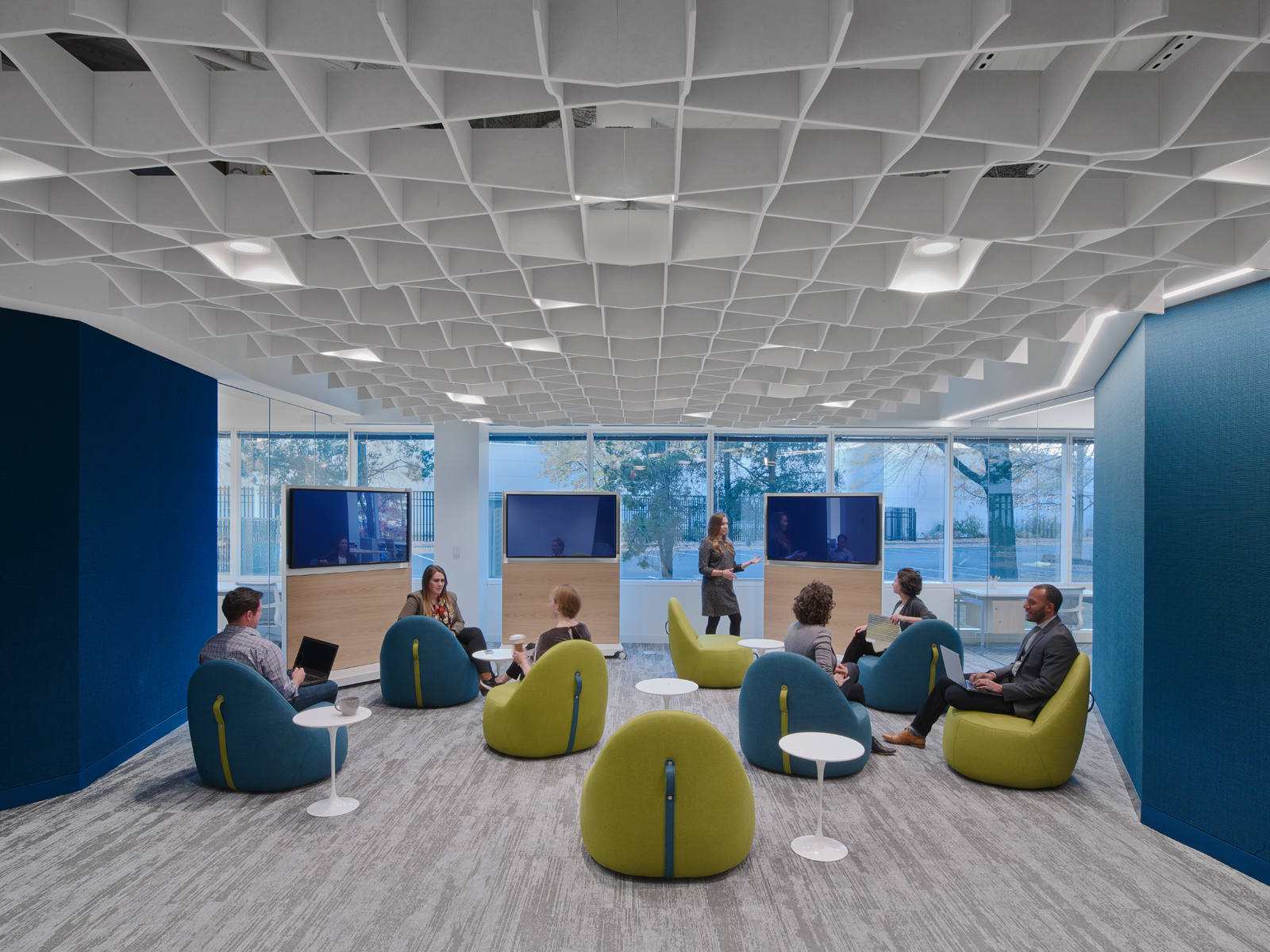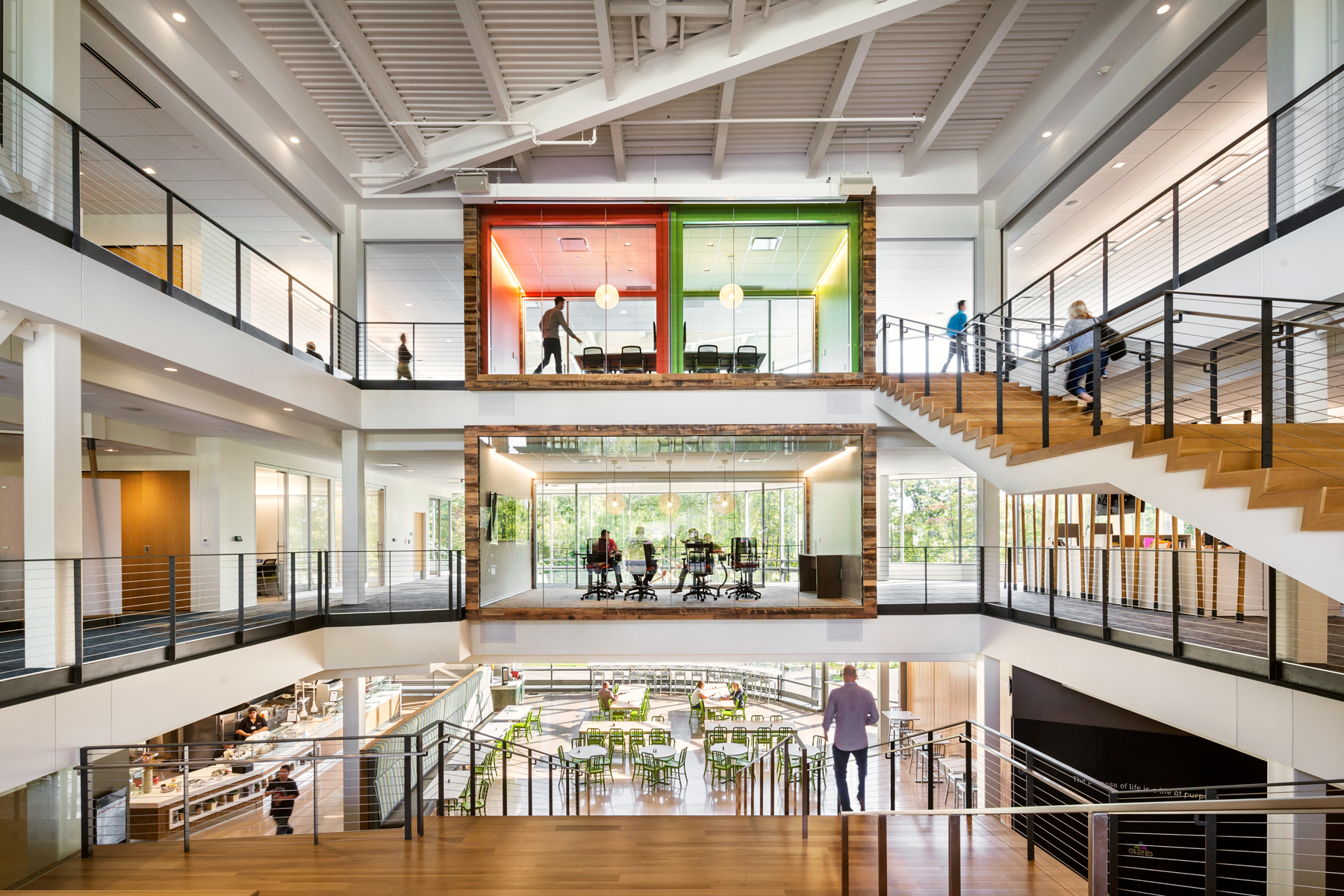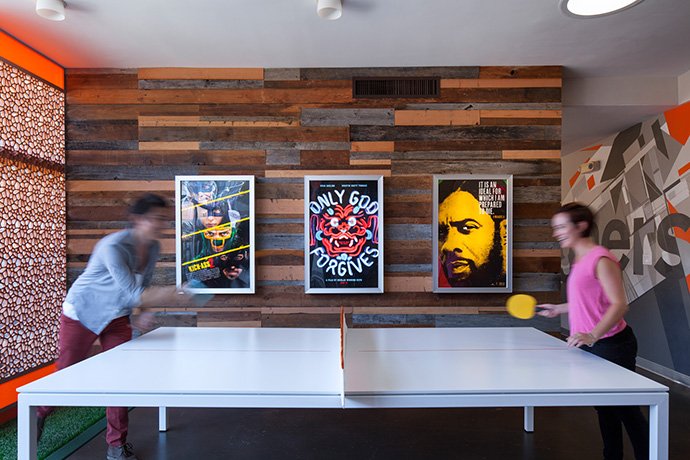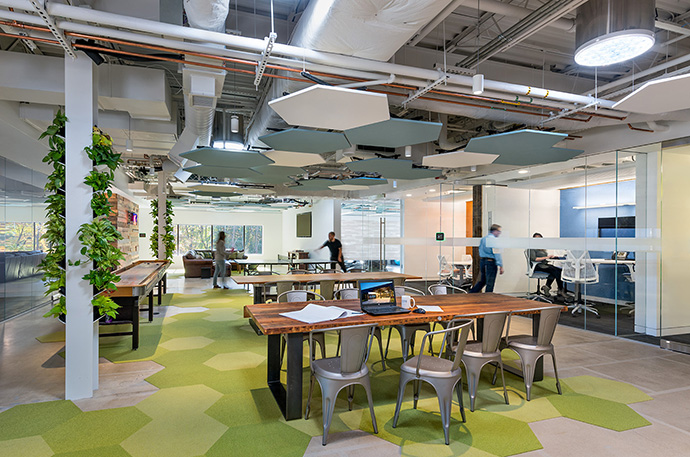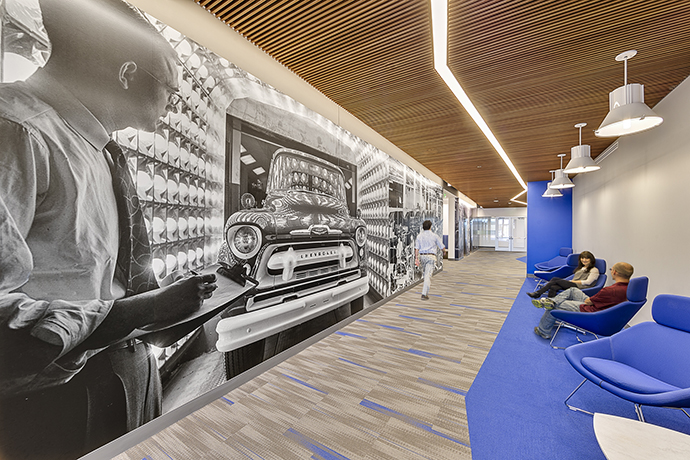Moving Beyond Productivity - Key Elements that Boost Innovation
This article, authored by Lise Newman of SmithGroup, contains portions of a previously published article in Work Design Magazine.
While bringing employees together can increase collaboration, successful companies recognize it requires more than co-location to stay ahead of the disruption curve. The workspace will only improve creativity if it is aligned with the organization’s culture and can enhance the total employee experience through the intentional incorporation of several design strategies.
PROXIMITY AND PATH OVERLAP
Over its 50 years of existence, MIT’s Building 20 earned the nickname “Magic Incubator.” Rather than working in individual offices, cross-disciplinary scientists worked together in the open, often in the transition zones of hallways and stairways to produce breakthrough research. More recent proximity studies on the MIT campus utilizing badge swipe data correlate path overlap with innovation; those scientists that crossed paths between buildings produced more patents than those that worked alone. Similarly, a 2013 research study at the University of Michigan found that both proximity and the intersection of key spaces that scientists crossed throughout the day influence discovery and creativity as path overlap correlates with the success rate of winning grant funding. Not unlike the lessons learned from the higher education examples, proximity and path overlap are key elements for workplaces of choice as employers value teamwork, communication, perspective, and critical thinking across multiple disciplines. Utilizing “found” space at the intersection of two office wings in this financial institution provides the occasion for chance encounters between employees throughout the day.
THREE WORK MODES
Providing employees with control and autonomy over their workspace is also critical in fostering creativity. Work changes throughout the day, and effective workspace integrates a range of settings that accommodate three distinct work modes:
- focus | concentrate
- meet | collaborate
- live | create
The newest members of the workforce want the freedom to move around and determine where they're going to be productive and with whom. Workplaces of choice offer a variety of eclectic places for employees to choose from—comfortable living rooms and lounges, libraries, community tables, outdoor workspace, as well as “off the radar” hangouts. By providing a range of settings that enable employees to choose when, where and how to accomplish their work, workspace transcends the ordinary and becomes a place where the efficiencies and focus of telecommuting are balanced by opportunities for serendipity and innovation. We’ve even found these strategies successful in our own offices.
ELEMENTS THAT BOOST CREATIVITY & INNOVATION
In working with organizations ranging from technology giants like Google and Microsoft to global manufacturers like General Motors and Ford Motor Company, several design elements emerge as common ingredients for workspace that inspires creativity.
Elements of Surprise. Neuroscientist Gregory Berns found that by introducing unfamiliar work settings, the imagination is inspired. Introducing limited, unexpected elements into the workplace environment can ignite the brain to reorganize perception, and look at an old problem with a new lens.
Hearth. Central gathering spaces like an open stair or wider, day-lit corridors encourage people to socialize informally between both focus work and meetings. In a recent post-occupancy survey for Lake Trust Credit Union Headquarters, over 85% of employees believe that spaces such as this central stair provide the chance encounters and unplanned interactions between employees that improve ad-hoc interaction and innovation. Other successful gathering spaces focus on food as the impetus for spontaneous conversations, uniting people across the organization and fostering the cross-pollination of ideas.
Rest + Play. In his research on the subject of insight and creativity, Jonah Lehrer found that when people take a break from focus work, imagination flows and the likelihood of creative breakthroughs increases. Others including psychologist David Abramis support Lehrer’s theory, and note that employees who also have fun at work are not only more creative, but often get along better with their peers than those who spend the entire day in contemplation.
Agility. An agile workplace incorporates all of the above features and often adds a few more. Flexible (aka unassigned) seating arrangements increase opportunities for cross-pollination and the breaking down of silos within organizations, as employees form relationships with colleagues they otherwise would have never meet. Successful agile workspaces need intuitive and convenient technology throughout and a variety of settings from which to work and collaborate. Hackable environments where employees can rearrange workspace themselves on an as-needed basis to support the formation of ad-hoc teams is also enhances innovation and creativity.
Brand. The final element that will boost engagement and creativity is the connection of every employee to the meaning behind their work. Employees want to work for employers that share similar values; by integrating brand identity throughout the workplace design strategy, the company’s purpose becomes a source of pride.
A FUTURE OUTLOOK
When looking towards the future, company and design firm considerations will be very different. In our highly connected world, the virtual space is becoming increasingly complex and how it supports our workspaces should not be ignored. In the last 15 years, this virtual space has evolved from simply allowing us to create and share documents more efficiently to supporting connections between workflows and the people engaged in them. This has led to the portability of work and then to the portability of collaborative work. The next evolution will be in the portability of the experience of collaborative work.
As virtual space created by augmented and virtual reality becomes more sophisticated, the sense of working side-by-side can be created with hundreds of miles between colleagues. While it may never precisely recreate the experience of truly working side-by-side, it will certainly advance collaboration from different physical spaces. An important key in the design of the workplace and creating a culture of innovation will lie in creating a balance between work in the physical and virtual spaces.
